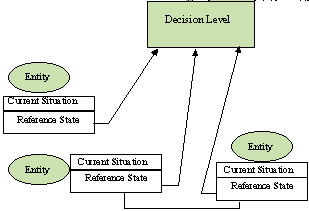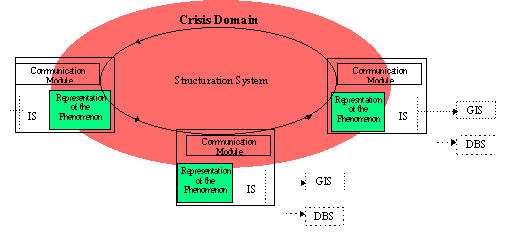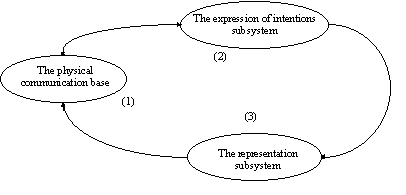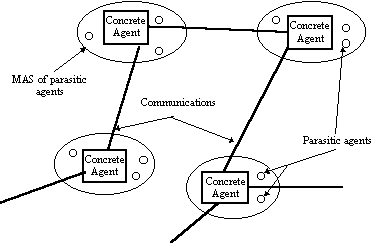
Fig 2. Communication of factual information in classical CIS
Alain Cardon
PSI-INSARouen, LAFORIA Paris VI URA CNRS 1095 | Stéphane Durand PSI-INSARouen |
|
1. Physical world, Objective entities. 2. Space of development oh the entities. 3. Movement, Organisations, Planification. |
Fig 1. Levels in the Classical Approach.

|
1. Physical world, Objective entities. 2. Space of development oh the entities. 3. Movement, Organisations, Planification. 4. Information Communication 5. Values, Symbols, meaning of the phenomenon, intentions. 6. Rules of the social game, power relations, emergence of the global meaning of the phenomenon |
Fig. 3. The six levels of a CICS.



